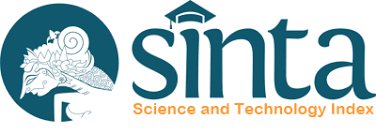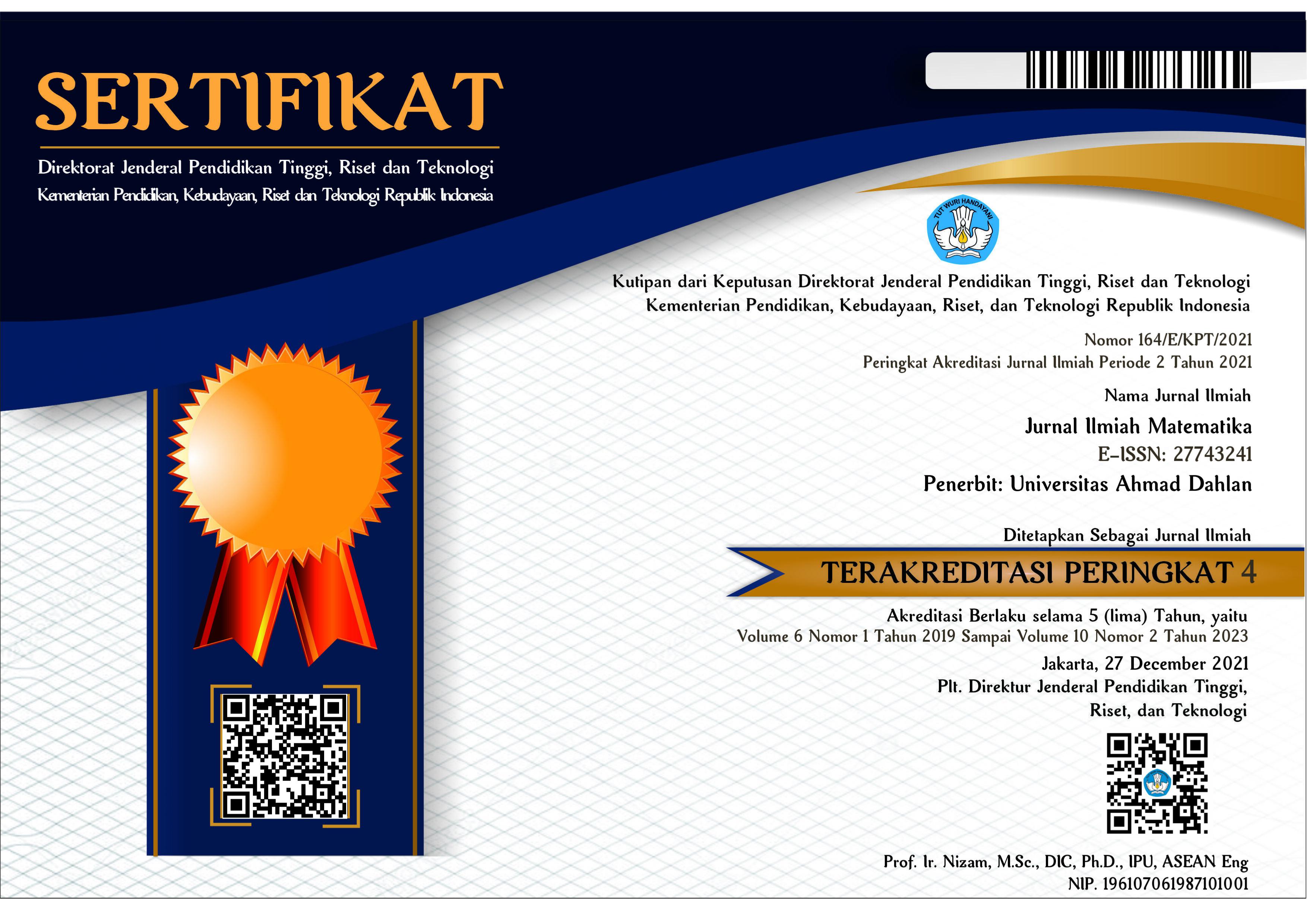Model matematika penyebaran flu burung dengan vaksinasi dan pertumbuhan logistik pada populasi unggas
DOI:
https://doi.org/10.26555/konvergensi.v7i1.19539Keywords:
Flu Burung, Vaksinasi, Perkembangan Logistik, Kesetimbangan, Analisis Stabilitas,Abstract
Flu burung adalah penyakit yang disebabkan oleh virus influenza tipe A. Virus influenza tipe B dan C dapat diisolasi dari manusia dan sifatnya kurang patogen dibandingkan dengan virus influenza tipe A. Dalam penelitian ini populasi manusia dibagi menjadi tiga kelas yaitu kelas manusia rentan S(t), kelas manusia terinfeksi I(t), dan kelas manusia sembuh R(t). Sedangkan populasi unggas dibagi menjadi tiga kelas yaitu kelas unggas rentan Sb(t), kelas unggas terinfeksi Ib(t), dan kelas unggas divaksinasi Vb(t). Berdasarkan hasil penelitian diperoleh satu titik kesetimbangan bebas penyakit (P0) dan satu titik kesetimbangan endemik (P1). Analisis kestabilan juga telah dilakukan diperoleh R0 kurang dari 1 maka P0 stabil asimtotik lokal dan R0 lebih dari1 maka P1 stabil asimtotik lokal. Hasil simulasi menunjukkan bahwa proporsi unggas yang divaksinasi dan unggas terinfeksi yang dibakar memperkecil populasi unggas yang terinfeksi flu burung sehingga dapat mencegah terjadinya wabah endemik.References
E. Budiarto and D. Anggraeni, “Pengantar epidemiologi,†Jakarta penerbit buku Kedokt. egc, 2003.
T. N. Padilah, “Model Epidemi SIRS dengan Pertumbuhan Logistik,†J. Silogisme Kaji. Ilmu Mat. dan Pembelajarannya, vol. 2, no. 1, pp. 22–31, 2017.
I. Murwanti, R. Ratianingsih, and A. I. Jaya, “Studi Penyebaran Penyakit Flu Burung Melalui Kajian Dinamis Revisi Model Endemik SIRS Dengan Pemberian Vaksinasi Unggas,†Nat. Sci. J. Sci. Technol., vol. 2, no. 1, 2013.
D. Rahmalia, “Pemodelan Matematika dan Analisis Stabilitas dari Penyebaran Penyakit Flu Burung,†Unisda J. Math. Comput. Sci., vol. 1, no. 01, pp. 11–19, 2015.
N. S. Chong, “Modeling avian influenza using Filippov systems to determine culling of infected birds and quarantine,†Nonlinear Anal. real world Appl., vol. 24, pp. 196–218, 2015.
N. R. da S. Martins, “An overview on avian influenza,†Brazilian J. Poult. Sci., vol. 14, no. 2, pp. 71–87, 2012.
T. A. Hutapea, “PREVENSI PENYEBARAN VIRUS H5N1 DENGAN MODEL SI-SIIR MELALUI KONTROL VAKSINASI PADA POPULASI MANUSIA,†Gener. KAMPUS, vol. 9, no. 2.
S. Siswanto, S. Supriyono, and W. Wuryanto, “MODEL MATEMATIKA PENYEBARAN FLU BURUNG DARI UNGGAS KE MANUSIA,†Unnes J. Math., vol. 2, no. 1, 2013.
R. J. Iswanto, “Pemodelan matematika aplikasi dan terapannya,†Graha Ilmu, Yogyakarta, 2012.
M. Kharis and A. N. Cahyono, “Pemodelan matematika pada epidemi influenza dengan strategi vaksinasi,†J. Mipa, vol. 38, no. 2, pp. 176–185, 2015.
N. Nuraini and T. Tasmi, “Optimal Vaccination and Treatment Schedules in a Deterministic Avian influenza Model,†J. Math. Fundam. Sci., vol. 48, no. 2, pp. 164–177, 2016.
Downloads
Published
Issue
Section
License
Authors who publish with this journal agree to the following terms:
1. Authors retain copyright and grant the journal right of first publication with the work simultaneously licensed under a Creative Commons Attribution License that allows others to share the work with an acknowledgment of the work's authorship and initial publication in this journal.
2. Authors are able to enter into separate, additional contractual arrangements for the non-exclusive distribution of the journal's published version of the work (e.g., post it to an institutional repository or publish it in a book), with an acknowledgment of its initial publication in this journal.
3. Authors are permitted and encouraged to post their work online (e.g., in institutional repositories or on their website) prior to and during the submission process, as it can lead to productive exchanges, as well as earlier and greater citation of published work.

This work is licensed under a Creative Commons Attribution-ShareAlike 2.0 Generic License.









